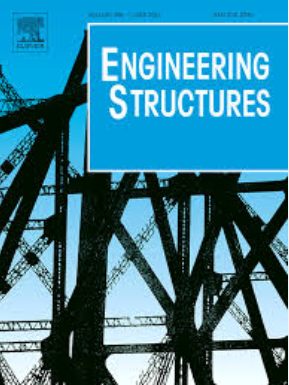Long-term prediction of surface chloride content of marine concrete structures using inverse physics-informed neural networks
IF 5.6
1区 工程技术
Q1 ENGINEERING, CIVIL
引用次数: 0
Abstract
In a complicated marine environment, the surface chloride content on reinforced concrete structures exhibits stochastic temporal fluctuations. Traditional models of surface chloride content only consider the change trend over time without considering the stochastic temporal fluctuations, leading to a lack of comprehensiveness and accuracy in prediction results. To address these limitations, a physics-data-driven framework, coupled with a time-dependent deterministic and fluctuation function, is proposed to reconstrue the holistic trend and local fluctuations of the surface chloride content with limited data. The fluctuation characteristics of the surface chloride content curve, arising from environmental action and structural resistance, are extracted using the Fourier-cosine decomposition method. An inverse physics-informed neural networks is proposed to enhance the predictability of stochastic and discrete time series. In this physics-informed neural network, a surface chloride content probabilistic model is used as the surrogate model to reconstrued the stochastic temporal fluctuations. The boundary loss function is formulated as the physical constraints of the aforementioned inherent-external stochastic temporal fluctuations, while the true value loss is generated as the discrepancy among the measured data, PINN prediction data, and surrogate model data. Utilizing the measured data and PINN, the surrogate model is refined, in which the initial chloride content, the accumulation rate, and the fluctuation phases of surface chloride content are updated. The application of this model to over 16-year data of naturally exposed concrete specimens demonstrate its effectiveness and accuracy for predicting surface chloride content with the relative error controlled by 10 %.
求助全文
约1分钟内获得全文
求助全文
来源期刊

Engineering Structures
工程技术-工程:土木
CiteScore
10.20
自引率
14.50%
发文量
1385
审稿时长
67 days
期刊介绍:
Engineering Structures provides a forum for a broad blend of scientific and technical papers to reflect the evolving needs of the structural engineering and structural mechanics communities. Particularly welcome are contributions dealing with applications of structural engineering and mechanics principles in all areas of technology. The journal aspires to a broad and integrated coverage of the effects of dynamic loadings and of the modelling techniques whereby the structural response to these loadings may be computed.
The scope of Engineering Structures encompasses, but is not restricted to, the following areas: infrastructure engineering; earthquake engineering; structure-fluid-soil interaction; wind engineering; fire engineering; blast engineering; structural reliability/stability; life assessment/integrity; structural health monitoring; multi-hazard engineering; structural dynamics; optimization; expert systems; experimental modelling; performance-based design; multiscale analysis; value engineering.
Topics of interest include: tall buildings; innovative structures; environmentally responsive structures; bridges; stadiums; commercial and public buildings; transmission towers; television and telecommunication masts; foldable structures; cooling towers; plates and shells; suspension structures; protective structures; smart structures; nuclear reactors; dams; pressure vessels; pipelines; tunnels.
Engineering Structures also publishes review articles, short communications and discussions, book reviews, and a diary on international events related to any aspect of structural engineering.
 求助内容:
求助内容: 应助结果提醒方式:
应助结果提醒方式:


